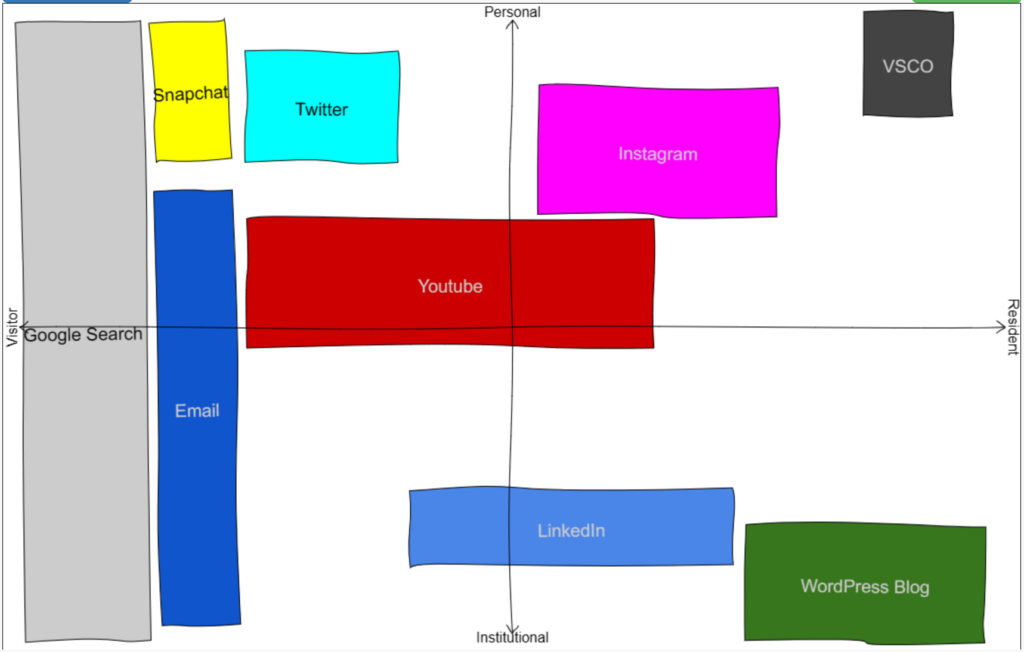In this era of digital connectivity, us students are not only focusing on our academic endeavors but also engaging in the development of our professional networks. In this blog post, I will explore the current digital platforms students are using, strategies for expanding professional learning networks, the impact of data privacy on these networks, and the importance of creating a positive digital identity.
Current Digital Platforms in Use
In the pursuit of creating an extensive professional network, students are turning to digital platforms. Myself and the entire discussion group were in agreeance of LinkedIn being the most popular choice. The University of Victoria’s Bachelor of Commerce program, with its co-op component, emphasizes utilizing digital platforms for networking, as creating a LinkedIn profile is necessary to graduate. The platform provides a space for students to showcase their academic achievements, work experiences, and professional skills. The platform’s emphasis on professional connections and self-promotion make it a valuable – and appealing – tool for students. Along with LinkedIn, students also use a wide variety of platforms for communication. These platforms each have their own advantages and include MS Teams, Slack, Gmail, Mattermost, and more.
Expanding a Professional Learning Network
While LinkedIn is an excellent starting point, I believe that students should have multiple strategies to expand their professional learning networks. Some of these strategies can include actively participating in industry-related forums, attending virtual/in-person conferences, or joining relevant online communities. Engaging in discussions, seeking mentorship, and regularly updating one’s profile with new accomplishments are also key elements in maintaining and developing a professional learning network. Along with this, diversifying the platforms used for networking ensures a comprehensive and multifaceted approach to connecting with professionals in the field. One way I chose to expand my PLN was through joining the mentorship program as part of the Gustavson School of Business. I was connected with a UVic alumni who was able to answer questions I had about the workplace, offer advice, and serve as a link to future opportunities.
Here is a copy of my “Visitors and Residents” map, where my usage of various platforms in the digital landscape are outlined.
On the horizontal axis, we have Visitor on the left and Resident on the right. This refers to the level of my impact on the space. In other words, am I leaving traces behind? Or simply popping in and out without impacting the space itself.
On the vertical axis we have Personal and Institutional. This simply refers to whether the platform is used for personal pleasure or work/school.

While my presence in the digital world is widespread, it tends to skew towards personal and visitor. I tend to keep to myself online. I have heard far too many stories of people getting their information hacked and/or stolen online, and because of this, I try to stay as a visitor in most spaces. In spaces I am unable to do so, I limit my digital footprint to those I know personally. The two exceptions being for professional use including LinkedIn and this blog.
Data Privacy and Security
The digital landscape comes with its set of challenges concerning data privacy and security. Maintaining a professional learning network often involves sharing personal and professional information, which raises concerns about the misuse of data. On one hand, privacy settings and secure platforms can limit unauthorized access, ensuring that only relevant information is shared. On the other hand, a heightened focus on data security promotes trust within the network, fostering an environment where professionals feel secure in sharing insights and experiences. I think it is important to note that striking a balance between accessibility and security is crucial for the sustained growth of a professional learning network. Personally, I believe that I have found a good balance, and discussions with the group confirmed that most people seem to be in similar positions.
Creating a Digital Identity or Reputation
In the digital realm, crafting a positive and professional digital identity can be difficult. I believe it is all about publicizing the side of you that best reflects being professional, while still staying true to yourself. Many people of our generation have not been careful with what they post online, and this digital footprint may come back to harm them in the future. Instead, do these things:
- Use platforms like LinkedIn to showcase your achievements and skills.
- Safeguard your privacy by adjusting settings and being mindful of shared content.
- Create a personal website or portfolio for a comprehensive display of your work.
- Seek and provide professional recommendations to boost credibility.
By maintaining consistency, authenticity, and a thoughtful approach, anyone can craft a digital identity that aligns with their professional aspirations, opening doors to valuable opportunities within their network.
What would an Employer Think?
More and more, employers look at a candidate’s social media presence when evaluating job applications. I believe that my PLN and DPI align with professionalism, potentially positively impacting my job prospects. When I apply, I include my LinkedIn in my application. It is professional, personal, and (in my opinion) impressive. Other than LinkedIn, I have nothing posted anywhere else online other than the photo sharing platform VSCO where I post aesthetic and professionally acceptable images.
In this digital age, building a positive online identity is important for success. By using platforms like LinkedIn, actively participating in discussions, and safeguarding privacy, you can shape an authentic and credible digital professional identity. Through consistency and thoughtful engagement, one’s digital identity becomes a powerful tool, unlocking opportunities within your professional network.
Recent Comments